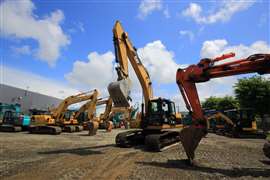Kanamoto eyes North America move
19 April 2024
 Photo: Kanamoto
Photo: Kanamoto
Japan-based rental company Kanamoto is exploring a potential move into North America, as it aims to break into the top five rental companies in the world.
Speaking to IRN, Tetsuo Kanamoto, president and CEO, said the company is carrying out a feasibility study with a view to a potential move in the future.
Mr Kanamoto said the market is a promising region to expand in and will support its goals to increase revenues from overseas; “To be top five I think we need to be in the North American market, which is very attractive.
“We’ve already begun a feasibility study to look into that and we’re looking into the US in depth. We can’t say right now if we are interested in any particular region, but we’re taking a deep dive into the market.”
The company told IRN that its plans for overseas markets would see it more than double overseas sales ratio over the next six years.
Hideaki Yamashita, overseas business division manager, said, “The aim is that 10% of group sales will come from our overseas business in five years’ time.
“If Kanamoto’s sales are ¥200 billion, ¥20 billion of that will be from our overseas. Right now, it’s around the ¥10 billion mark, which is less than 5%.”
To hit that goal, the company is targeting mergers and acquisitions, with one area of focus being Australia, which it first entered in 2020 with the purchase of Victorian-headquartered rental company Porter Plant Group.
The company said the region has been profitable since the acquisition, and future growth could be driven by more purchases.
A full interview with Mr Kanamoto and Mr Yamashita can be found here.





